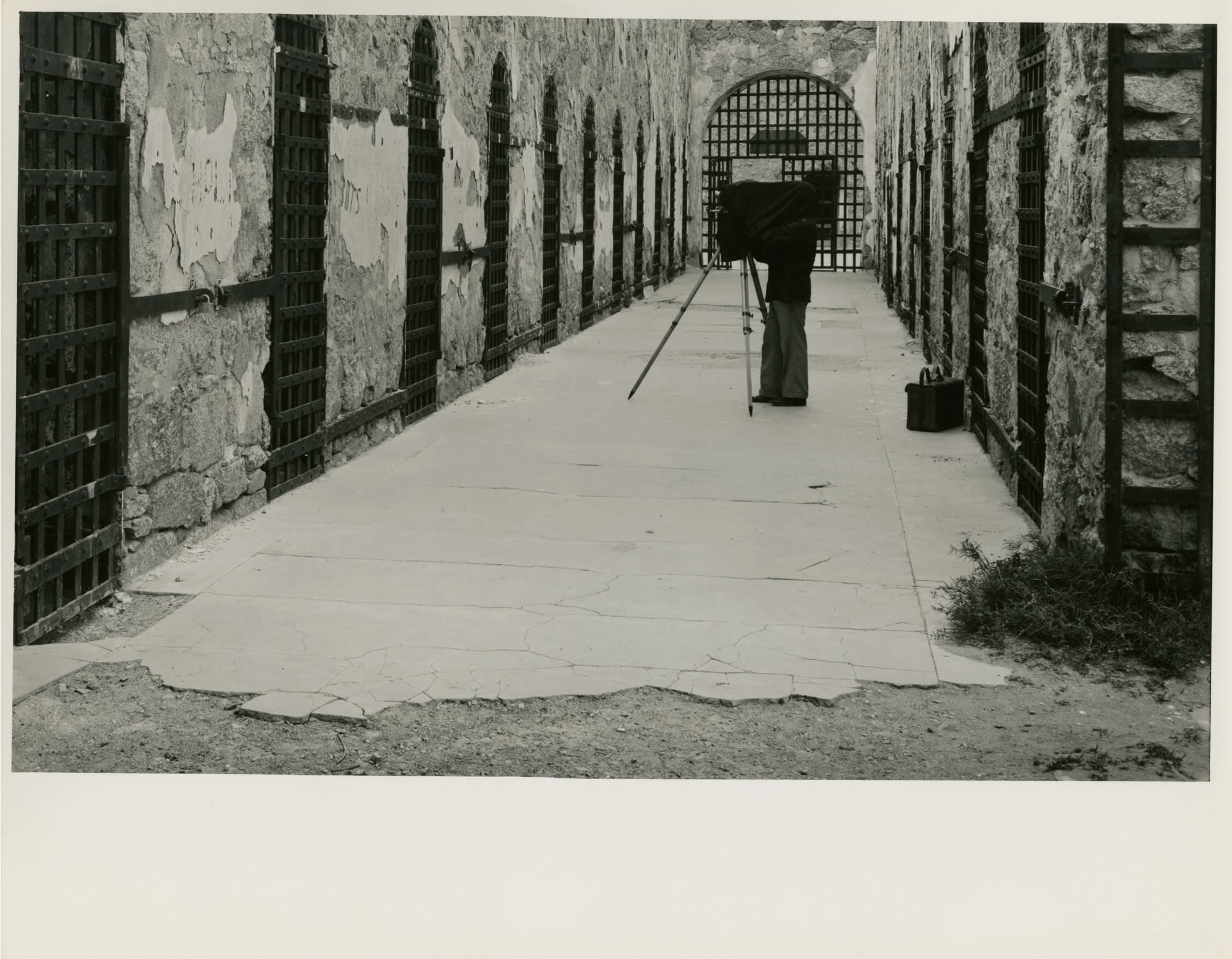
Portrait of Aaron Siskind by Max Yavno
Aaron Siskind was born in New York, the son of Russian Jewish immigrants. Siskind’s early loves were poetry, literature and music. After receiving his BA from the College of the City of New York in 1926, he taught high school English for 21 years in the New York City public school system. In 1930, he received his first camera as a going-away present before his honeymoon. He began his photography career as a socially committed documentary photographer in the New York Photo League in 1932. From 1936 to1940, he oversaw the Feature Group creating documentary photo-essays including Harlem Document, Dead End: The Bowery; Portrait of a Tenement, and St. Joseph’s House: The Catholic Worker Movement.
In 1944 Siskind relinquished his documentary style in favor of abstract images of weathered walls, torn posters, bits of seaweed, fragments of graffiti and other detritus. He began concentrating on these cast-off subjects as an exercise in seeing. Like Harry Callahan, both photographers searched for a heightened, universal experience in ordinary life. Siskind also cultivated friendships with Abstract Expressionist painters Franz Kline, Barnett Newman, Adolph Gottlieb, and Mark Rothko, and began to exhibit with them at the Charles Egan Gallery.
In 1951, Harry Callahan invited Siskind to teach photography at the Institute of Design at the Illinois Institute of Technology. Siskind taught and later ran the photography program at the ID for twenty years. In 1963, he helped found the Society for Photographic Education. Siskind and Callahan were reunited in 1971 when Siskind left the Institute of Design for the Rhode Island School of Design where Callahan was teaching. He continued to teach until his retirement in 1976.
During the 1950s, architecture was an important photographic concern. One of his major projects was to document the Adler and Sullivan buildings in Chicago. His primary subjects at this time were urban facades, graffiti, isolated figures, and the stone walls of Martha’s Vineyard. The subjects of these graphic series of images resemble script, reflecting Siskind’s interest in musical scores and poetry. Siskind’s work combined Bauhaus experimentalism with his exploration of modernism’s emphasis on significant form. The other important series from this period is the Pleasures and Terrors of Levitation (1953). This highly formal series of photographs depicts the dark shapes of divers suspended mid-leap against a blank white sky. Shot with a hand-held twin-lens reflex camera at the edge of Lake Michigan, the balance and conflict suggested by the series’ title is evident in the divers’ sublime contortions.
Siskind and Abstract Expressionist painter Franz Klein had been friends for years when Klein died in 1962. Siskind began his homage in December 1972 on a car trip in Mexico, through Jalapa. Homage to Franz Kline is composed of six groups of work, each identified by the place and time in which they were shot and, despite overarching themes, each has a distinct character.
Siskind traveled widely, making multiple trips to Mexico and Italy, including a period spent in Rome during his 1966 Guggenheim Fellowship. Like experimental poetry and Abstract Expressionist painting, Siskind’s work was intended to appeal to a relatively small audience of viewers open to its advanced ideas and the opportunities it offered for self-reflection. Aaron Siskind died in Providence, Rhode Island on February 11, 1991 at the age of 87.
Aaron Siskind’s archive is at the Center for Creative Photography, and his work is in major public collections such as, The Museum of Modern Art, the National Gallery, the International Center for Photography, the Museum of Contemporary Photography the Smithsonian Institute as well many other museums in the U.S. and abroad.
Sources: Lecture notes, Dr. Douglas R. Nickel, Director, Center of Creative Photography, University of Arizona, 2005, the National Gallery of Art, Museum of Contemporary Photography, Columbia College, Chicago, and The J. Paul Getty Museum.
